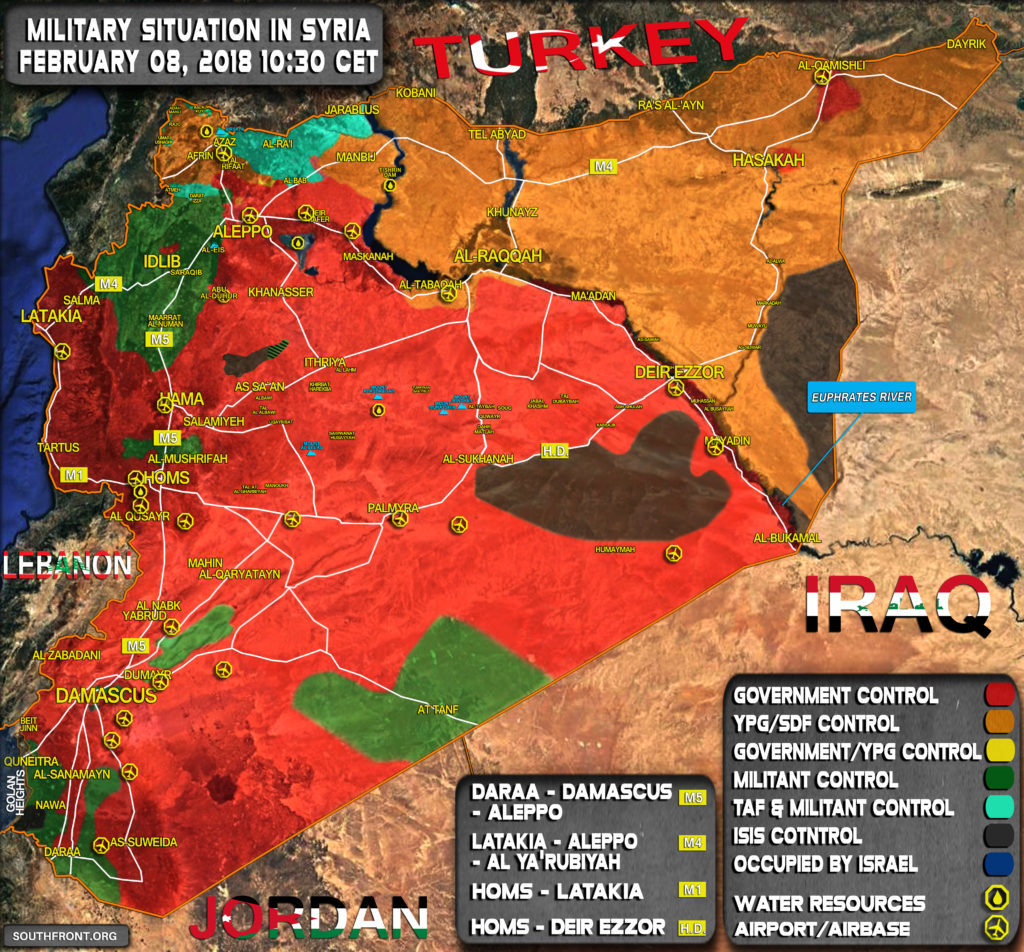
© South Front
On February 7, the US-led coalition carried out several airstrikes on positions of the Syrian Arab Army (SAA) in the province of Deir Ezzor. The coalition claimed that the SAA had "
initiated an unprovoked attack against well-established Syrian Democratic Forces [SDF] headquarters," added that "
coalition service members" were co-located with SDF fighters during the attack, and described the strikes as "
self-defense".
According to local sources, the US targeted positions of the SAA near the town of Khasham, located on the eastern bank of the Euphrates River, where some clashes between the SAA and the SDF were also reported. Earlier, pro-opposition sources speculated that the SAA was preparing to use Khasham as a foothold to attack the SDF position in the areas of the CONICO gas facility and the Jafar oil field. However, these reports were not confirmed by any evidence.
No doubt the US-led coalition will use the incident to deepen the rift between the SAA and the Kurdish-dominated SDF. Earlier this month, Damascus allowed a large convoy of Kurdish fighters to reach the area of Afrin where Turkey is conducting a military operation against YPG/YPJ forces that are the core of the SDF. However, relations between the sides remained complicated.
On February 7, the media wing of the YPG released a video showing two ATGM strikes at battle tanks of the Turkish Armed Forces (TAF). The strikes were conducted in the Rajo and Bulbul districts of Afrin. Both tanks were allegedly destroyed. On the same day, reports appeared that two TAF service members died in the Afrin operation.
Meanwhile, the TAF and the Free Syrian Army captured Hawiz Hill and re-entered Shaykh Khurus. On February 8, clashes continued there.
The SAA, the Tiger Forces and their allies made large gains against ISIS in the northeastern Hama pocket. The ISIS resistance remains in Suruj, Ibn Wardan Qastel and a number of small points across the remaining militant-held area.
Hayat Tahrir al-Sham continued its attempts to exploit the SAA operation against ISIS attacking government positions west and north of Abu al-Duhur. Fierce clashes are ongoing there.
Heroic Death Of Russian Su-25 Pilot And Operation In IdlibOn February 3, militants of Hayat Tahrir al-Sham (formerly Jabhat al-Nusra) shot down a Russian Su-25 attack aircraft with a MANPAD, over the village of Khan al-Sabil in the Syrian province of Idlib. The attack aircraft was on a combat patrol, carrying out airstrikes on facilities belonging to the terrorist group in the area of Saraqib.
The warplane's pilot, Major Roman Filipov ejected before the plane crashed. Injured and surrounded, Filipov fought with the militants on the ground. During the fight, he fired at least 40 rounds from his Stechkin automatic pistol at the enemies. Then, Filipov allowed the militants to approach him, shouted "
This is for our boys!" and blew himself up using a hand grenade. This explosion likely killed or injured a few militants.
Following the incident, Russian Aerospace Forces carried out a massive strike on the area where the militants downed the warplane and where they attempted to capture its pilot. According to the Russian Defense Ministry, the strike killed at least 30 militants.
With the help of Turkey, Filipov's body was handed over to Russia and was brought to the country on February 6. Major Filipov was posthumously awarded the title of the Hero of Russia, the highest honorary title of the Russian Federation.
According to local sources, Russia deployed additional units of Special Forces at frontlines in Syria following the shootdown of the Su-25.
It appears that the incident triggered an increase of both ground and air aspects of the Russian military involvement in the Idlib operation. This may become a turning point in the standoff in this part of the country, similar to the operations in Aleppo, Deir Ezzor and Palmyra, when Russia shifted its strategy from regular support of the Syrian Army to direct active actions. If this occurs, it would significantly influence the dynamic and the nature of the military operations in Idlib.
The rest of is has been tales of misery. unfortunately our msm do not have balls to tell those stories. no wonder msm is fading. telling paid gov commercials. can have that for free from the source.